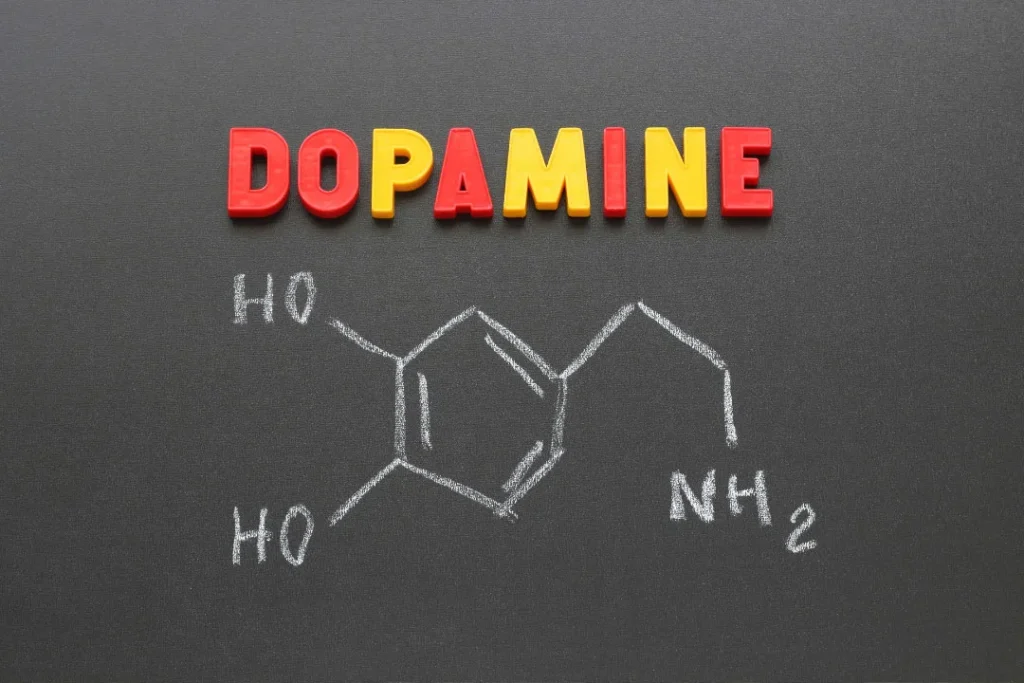Theobroma cacao tree produces cocoa, which is widely used in beverages and confections worldwide. Over time, the traditional view of cocoa has changed from one of pleasure to one of a powerful nutritional supplement with significant health advantages. Its diverse phytochemical composition, particularly flavonoids, which have anti-inflammatory, anti-oxidative, and neuroprotective activities, is largely responsible for the metamorphosis. This article provides a thorough description of the nutritional profile, health advantages, recommended dosages, possible side effects, and drug interactions of cocoa.
You May Also Like:
The Best Supplements for Memory and Brain Fog: 5 Top Brands Reviewed
Finding the Best Supplements for Brain Fog After COVID: 5 Top Brands Reviewed
Cocoa: Benefits, Dosage, Side Effects, Drug Interactions, and Other Important Information is an original (NootropicsPlanet) article.
Nature of Cocoa
Over 300 different chemicals combine to create cocoa beans, the main ingredient in chocolate and cocoa supplements. These diverse chemicals all work together to provide cocoa with its distinctive flavor and health benefits. Polyphenols, particularly flavonoids like epicatechin, catechin, and procyanidins, methylxanthines like caffeine and theobromine, and biogenic amines like phenylethylamine and tyramine are some of the main components. Together, these substances support cocoa’s capacity as an antioxidant, its anti-inflammatory qualities, and its mood-lifting benefits.
Epicatechin and catechin, two flavonoids found in cocoa, are major contributors to its health advantages. They exhibit a variety of bioactivities and are part of the larger class of antioxidants known as polyphenols. These substances serve crucial roles in boosting cardiovascular health, improving cognition, and perhaps even lowering the risk of cancer by scavenging reactive oxygen species, mitigating oxidative stress, and reducing inflammation. Primary methylxanthine in theobromine a primary methylxanthine in cocoa, is a mild stimulant and vasodilator, improving circulation and cognitive performance.

Health Benefits of Cocoa
The high flavonoid concentration of cocoa, especially epicatechin, supports cardiovascular health in a number of ways. They have vasodilatory effects that increase blood flow and lower blood pressure. Additionally, they exhibit anti-platelet properties that lower the risk of stroke and blood clot formation.
The neuroprotective properties of cocoa flavonoids also apply to mental health. The blood-brain barrier is crossed by epicatechin and other flavanols, which shield neurons from damage brought on by neurotoxins, reduce neuroinflammation, and improve cognition and memory.
Additionally, theobromine and phenylethylamine, two substances found in cocoa, are psychotropic. A biogenic amine called phenylethylamine elevates mood and promotes pleasure through modifying endorphin release and dopamine concentration.

Chemistry of Cocoa
In its purest form, cocoa is made from the beans of the Theobroma cacao tree. These beans are a sophisticated bioactive matrix with over 300 distinct components. The abundance of polyphenols in cocoa, notably flavonoids like catechins, epicatechins, and procyanidins, emphasize the plant’s phytochemical profile.
Chemically speaking, flavonoids have a 15-carbon skeleton made up of two phenyl rings and one heterocyclic ring, making them powerful antioxidants. These chemicals’ antioxidant characteristics, which allow them to scavenge free radicals and lessen oxidative stress, are conferred by their chemical structure. Methylxanthines, notably theobromine and an infinitesimal quantity of caffeine, and biogenic amines like phenylethylamine and tyramine are other noteworthy components.

Physiological Mechanisms of Action of Cocoa
The impacts of cocoa’s bioactive components on numerous physiological pathways are the primary mechanisms by which the health advantages it confers are mediated. Cocoa flavonoids are strong antioxidants. They reduce oxidative stress and related cellular damage by neutralizing dangerous free radicals once they have entered the bloodstream. They also have anti-inflammatory effects by controlling the activity of numerous enzymes and cell signaling pathways involved in inflammation.
The flavonoids in cocoa can also encourage the endothelium, the inner lining of blood arteries, to produce more nitric oxide (NO). NO is a potent vasodilator that relaxes and dilates blood vessels, lowering blood pressure and enhancing cardiovascular health. Additionally, cocoa flavonoids have anti-platelet properties that lower the likelihood of thrombus or clot formation.
Notably, cocoa flavonoids can pass the blood-brain barrier and immediately impact your brain. They guard your neurons against damage brought on by neurotoxins, control neuroinflammation, and enhance cognition in general. Although the precise mechanisms are still being explored, it seems that cocoa flavonoids may strengthen neural connections and encourage neurogenesis, or the growth of new neurons.
Another distinct mechanism is a modest central nervous system stimulant called theobromine’s ability to make people feel alert and content. In order to exert its effects, phenylethylamine boosts the release of endorphins and modifies the concentration of dopamine, a neurotransmitter linked to pleasure and reward.

Optimal Dosage of Cocoa
Due to variability in cocoa products and individual differences in absorption and metabolism, determining the ideal dosage for cocoa is challenging. However, research indicates that ingesting 200–600 mg of cocoa flavanols daily may have positive health impacts with no side effects.
Side Effects
Although cocoa is generally safe to eat, excessive consumption can have negative effects, mostly because of theobromine, which contributes to alertness. High doses have been linked to tachycardia, sleeplessness, restlessness, and stomach pain. Additionally, there is a chance that certain drugs, including benzodiazepines, antidepressants, and antihistamines that are processed by the CYP3A4 enzyme, may interact with cocoa.
Potential Substance Interactions
Theobromine, the main methylxanthine in cocoa, has a pharmacological profile like that of caffeine although being less strong. As a result, cocoa may intensify the effects of stimulant medications (such as ephedrine, amphetamines, or Ritalin), which may result in adverse effects including hypertension or an accelerated heart rate.
Flavonoids in cocoa may also inhibit cytochrome P450 enzymes, specifically the CYP3A4 enzyme. Several drugs, including certain antihistamines, statins, calcium channel blockers, HIV protease inhibitors, and several benzodiazepines, are metabolized with the help of this enzyme. As a result, those who take these medications should exercise caution because cocoa may interfere with their metabolic breakdown, increasing blood levels and possibly causing toxicity.
It has been noted that cocoa has antiplatelet properties, which decrease the blood’s capacity to clot. The effects of anticoagulant and antiplatelet drugs like warfarin, clopidogrel, and aspirin could theoretically be enhanced by this action, thus raising the risk of bleeding.
Some research indicates that cocoa may improve insulin sensitivity and affect glucose metabolism. As a result, cocoa may enhance the effects of antidiabetic medications in people who are already using them, raising the risk of hypoglycemia. In such circumstances, regular blood glucose monitoring would be advised.
Responsible Use of Cocoa
With its potent combination of flavonoids and other bioactive elements, cocoa has the potential to be a powerful anti-oxidative dietary supplement. An increasing collection of scientific data supports its promising effects on cardiovascular health, cognitive, and mood control. But, just like any dietary supplement, it should

Cocoa:
Conclusion
Though cocoa has primarily been a sweet and delicious dessert ingredient for many, it carries an abundance of health benefits due to its phytochemical composition. When dosed correctly, cocoa can improve feelings of alertness, reduce cellular damage, and lower blood pressure. You can feel good about your cocoa consumption knowing that it has the ability to improve neurocognition and control inflammation. As always, confer with a doctor before incorporating significant amounts of cocoa into your diet, especially if you suffer from diabetes and hypertension.
References:
- Cocoa as a medicine; The Present and Future of Cocoa Research.link:https://www.frontiersin.org/research-topics/968/cocoa-as-a-medicine-the-present-and-future-of-cocoa-research
- Cocoa and Chocolate in Human Health and Disease.link:https://www.ncbi.nlm.nih.gov/pmc/articles/PMC4696435/
- The Cocoa Research Institute of Ghana, studies cocoa, cashew, kola nut, shea, coffee, and soil.link:https://www.crig.org.gh/
Important Note: The information contained in this article is for general informational purposes only, and should not be construed as health or medical advice, nor is it intended to diagnose, prevent, treat, or cure any disease or health condition. Before embarking on any diet, fitness regimen, or program of nutritional supplementation, it is advisable to consult your healthcare professional in order to determine its safety and probable efficacy in terms of your individual state of health.
Regarding Nutritional Supplements Or Other Non-Prescription Health Products: If any nutritional supplements or other non-prescription health products are mentioned in the foregoing article, any claims or statements made about them have not been evaluated by the U.S. Food and Drug Administration, and such nutritional supplements or other health products are not intended to diagnose, treat, cure, or prevent any disease.


